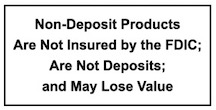Individual Retirement Account
Secure Your Future With An Individual Retirement Account
Is an IRA Right For You? Take our Exchange Bank of Missouri One-Minute IRA Test and find out. Then call one of our customer service representatives today at any of our convenient locations.
You might also be able to save on your present taxes with an Individual Retirement Account, by deducting your qualified contributions from your taxable income. Many Americans can deduct all or part of their IRA contributions from current income taxes. The deductible amount depends on your income, marital status and whether you’re an active participant in an employer sponsored plan as defined by the Internal Revenue Service.
With an Individual Retirement Account, you may also be able defer taxes until you retire when you will probably be in a lower tax bracket. The chart below shows you how much you may be able save each year. You may want to consult your tax advisor to review the tax deductible status of an IRA. Regardless of the amount you’ll be able to save now on taxes, an IRA is a smart way for you to save for a secure retirement.
IRA Tax Savings Potential Chart:
| IRA Deductible Contribution Amount | 10 % Tax Bracket Savings | 15 % Tax Bracket Savings | 25 % Tax Bracket Savings | 28 % Tax Bracket Savings | 33 % Tax Bracket Savings | 35% Tax Bracket Savings |
| $ 500 | $ 50 | $ 75 | $ 125 | $ 140 | $ 165 | $ 175 |
| $ 1,000 | $ 100 | $ 150 | $ 250 | $ 280 | $ 330 | $ 350 |
| $ 2,000 | $ 200 | $ 300 | $ 500 | $ 560 | $ 660 | $ 700 |
| $ 2,250 | $ 225 | $ 338 | $ 563 | $ 630 | $ 743 | $ 788 |
| $ 4,000 | $ 400 | $ 600 | $ 1,000 | $ 1,120 | $ 1,320 | $ 1,400 |
If You’re Changing Employers, An IRA Rollover Makes Sense. If you are retiring or changing jobs and anticipate withdrawing money from your employer’s retirement plan, you can avoid withdrawal penalties by transferring your assets into an IRA or another qualified plan. You can ask your employer to arrange for a “direct rollover” of your money into a new IRA account with us, or you can do it yourself with an IRA-to-IRA rollover.
You must complete the rollover within 60 days from the date you receive the assets from your old IRA in order to qualify and not pay the mandatory 20% withholding and possibly other penalties as well. For more information about IRA Rollovers or opening a new IRA just give us a call at any of our convenient locations.
*The IRS is changing its long-standing position on the one-per-12 month rule for IRA rollovers. When the IRS applies its new interpretation (presumably January 1, 2015), an IRA owner may complete only one IRA rollover in any 12-month period, regardless of how many IRAs she owns. IRA owners need to be prepared and plan should they consider an IRA to IRA rollover in 2015.





